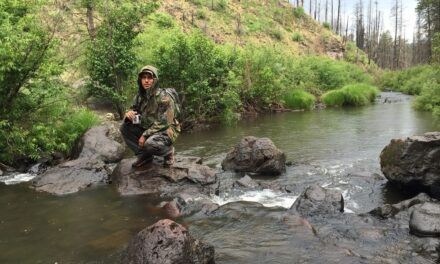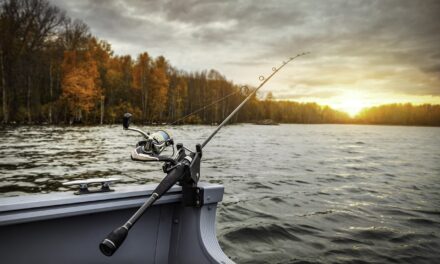The call of the wild beckons to many, drawing adventurers into the heart of nature’s untamed beauty. Yet, the wilderness, with its sprawling landscapes and hidden trails, holds challenges that demand respect, preparation, and a keen sense of direction. Navigating the wilderness is an essential skill for any outdoor enthusiast, from the seasoned hiker to the weekend camper. This comprehensive guide delves into the basic wilderness navigation tips that are crucial for safely enjoying the great outdoors.
Understanding how to navigate through dense forests, across vast plains, or over towering mountains can be the difference between a thrilling adventure and a perilous ordeal. In an age where technology is ever-present, the importance of mastering basic navigation skills can sometimes be overlooked. However, when signals fade and batteries die, the knowledge of reading a map, using a compass, and understanding the natural environment becomes invaluable.
Wilderness navigation is both an art and a science. It combines the practical skills of reading topographical maps and compasses with the intuitive ability to read the land itself. It’s about developing a connection with the environment, using both tools and natural indicators to guide your path. This guide aims to equip you with the fundamental skills needed to navigate the wilderness confidently. We’ll cover everything from understanding map symbols to navigating by the stars, ensuring that you’re prepared for your next outdoor adventure.
Navigating the wilderness successfully also means being prepared for the unexpected. Weather conditions can change rapidly, trails can become obscured, and landmarks may not be as easily recognizable as they appear on a map. This guide will also touch on how to prepare for these eventualities, offering tips on how to stay oriented and make informed decisions when the path ahead is unclear.
Whether you’re planning a day hike, a multi-day backpacking trip, or simply want to be more prepared for any outdoor excursion, understanding basic wilderness navigation is essential. So, let’s embark on this journey together, exploring the essential navigation skills that every adventurer should know.
Diving Deeper: Essential Navigation Skills and Tools
Mastering the Map
The foundation of wilderness navigation rests on your ability to read and understand a map. Topographical maps, with their detailed depiction of the landscape, are particularly invaluable. They show elevation changes, bodies of water, trails, and other key landmarks. Learning to read contour lines, symbols, and scale is crucial. This not only helps you plan your route but also prepares you for the terrain ahead.
The Compass: Your Trusty Guide
Even in our GPS-dominated world, the compass remains a reliable and essential navigation tool. Understanding how to use a compass in conjunction with a map is a fundamental wilderness skill. This includes learning how to take bearings, understanding magnetic declination, and using the compass to orient your map to the surrounding landscape.
Navigating by the Stars
When technology fails, the night sky can be a navigator’s best friend. Basic knowledge of celestial navigation, including how to locate the North Star (Polaris) in the Northern Hemisphere, can provide direction when other tools are unavailable. While navigating by the stars is more complex, it’s a valuable skill for anyone serious about wilderness exploration.
Natural Navigation
Beyond maps and compasses, the natural environment offers its own navigation aids. From understanding how moss growth can indicate north in certain regions to recognizing the direction of water flow in rivers, natural navigation is about observing and interpreting the signs nature provides.
Weather Awareness
Weather conditions can significantly impact your ability to navigate. Fog, heavy rain, and snow can reduce visibility and obscure landmarks. Developing the ability to read weather patterns and anticipate changes can be as crucial as knowing how to read a map or use a compass.
Expert Insights: Enhancing Your Navigation Proficiency
To further hone your wilderness navigation skills, consider taking a course from a reputable outdoor organization. Expert instructors can provide hands-on training, from basic map and compass skills to advanced techniques in GPS navigation and celestial sighting. Additionally, practice is key. Regularly testing your skills in a controlled environment can build confidence and proficiency.
Technology, while not a substitute for fundamental navigation skills, can be a powerful complementary tool. GPS devices and smartphone apps offer convenience and additional layers of safety. However, always have a map and compass as backups and ensure you know how to use them effectively.
Lastly, learning from mistakes is part of the process. Every wrong turn is an opportunity to improve your navigation skills. Reflect on what went wrong, why it happened, and how you can prevent similar mistakes in the future.
Summary and Takeaways: Navigating Your Way to Adventure
Embarking on adventures in the great outdoors brings with it the challenge of navigating through unfamiliar terrain. The skills and insights shared in this guide provide a foundation upon which you can build your wilderness navigation proficiency. Remember, the key to successful navigation lies not only in the tools you carry but also in your understanding of the environment and your ability to adapt to changing conditions.
Key Takeaways for Effective Wilderness Navigation:
- Invest in Learning: Take the time to learn how to read topographical maps and use a compass. These basic skills form the cornerstone of effective wilderness navigation.
- Embrace Technology, with Caution: While GPS and smartphone apps are valuable tools, they should complement, not replace, traditional navigation skills. Always carry a map and compass as reliable backups.
- Practice Makes Proficient: Regularly practice your navigation skills in a variety of settings to build confidence and competence. Start in familiar areas and gradually challenge yourself with more complex terrain.
- Stay Observant: Use natural landmarks and changes in the environment to aid in navigation. Developing an awareness of your surroundings is a vital skill in the wilderness.
- Be Prepared for the Unexpected: Always plan for changing weather and potential emergencies. Flexibility and the ability to make informed decisions are critical in dynamic outdoor environments.
Wilderness navigation is a journey of continuous learning and practice. Each trip into the outdoors is an opportunity to refine your skills, making every adventure not just safer but also more rewarding. Whether you’re navigating a dense forest, scaling a mountain, or exploring a remote trail, the confidence that comes with good navigation skills is invaluable. So equip yourself with knowledge, practice regularly, and embrace the adventure that awaits with confidence and enthusiasm.








